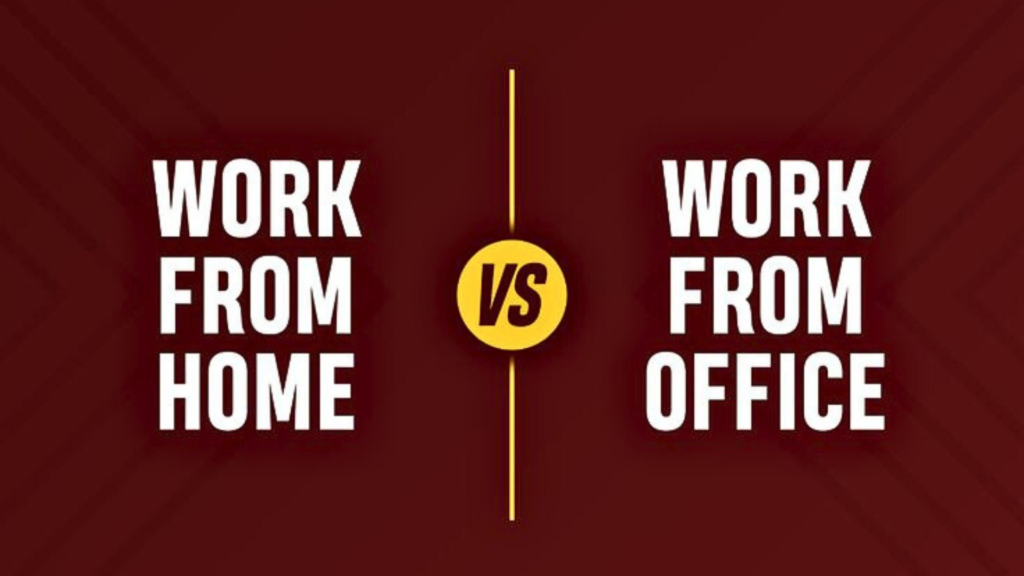Since the COVID-19 pandemic, remote work has evolved from a temporary solution to a persistent trend shaping our work. Despite initial predictions that workers would eventually return to the office, remote work remains prevalent, not just for a few people.
Nick Bunker, economic research director for North America at job site Indeed, once said, “The work-from-home revolution is one of the major shifts in the U.S. labor market in the last couple of decades.” He went further, saying, “It’s still kicking. It’ll probably be around for a long time.”
According to economists and experts, this change is not just a transitory phase but represents a significant evolution in the U.S. labor market. Companies across various industries continue embracing remote work, and many employees prefer it over the typical office setting.
So, why is remote work still thriving? The answer lies in a combination of evolving technological advancements, changing work culture, and the apparent benefits that remote work offers to both employers and employees.
What Does Remote Work Mean?
Remote work refers to an arrangement where employees perform their duties from home or another space rather than from an office. It is also called telecommuting, telework, work from home (WFH), hybrid work, and other terms.

The key difference between typical office work and remote work is the absence of a daily commute to a physical workplace. Alternatively, employees can use digital technologies like cloud-based collaboration platforms, project management software, and video conferencing to communicate with their teams and finish tasks.
Remote jobs come in different shapes and sizes, from freelance opportunities to part-time and full-time positions. Some common examples of remote jobs include:
- Software Developer: Many tech companies offer remote work positions for software developers who can write, test, and implement code anywhere. These positions often require proficiency in programming languages and collaborating with a remote team.
- Graphic Designer: Graphic designers can work remotely by creating visual content for websites, social media platforms, and marketing materials. This job typically involves using design software and communicating with clients or other team members using email or video calls.

- Customer Support Representative: Companies in various industries hire remote customer support representatives to assist customers with inquiries, troubleshoot issues, and provide information about products or services. These roles often require good communication skills and a reliable internet connection.
Other remote job positions include content writer, virtual assistant, consulting, blogger, affiliate marketing, online tutor, travel agent, and social media manager.
These are just a few examples, but the possibilities for remote work are numerous and diverse. Nowadays, practically every profession that doesn’t require a physical presence can be done remotely because of the development of digital technologies and internet platforms.
ALSO READ: A Sizable Number of Young Adults Are Out of Work, They Are ‘NEETs’ and ‘New Unemployable’
Is Remote Work Better Than Office Work?
The debate over whether remote work is better than office work is still up for dispute, with valid arguments on both sides. However, many people who have experienced remote work firsthand would argue that it has unique benefits that can make it a preferable option.
Advantages of Remote Work:
- Flexibility: Employees can often set their schedules, effectively balancing professional obligations with personal commitments. This flexibility is particularly beneficial for parents, caregivers, and individuals with other commitments outside of work.
- No Commute: Not only does skipping the daily commute save time, but it also reduces stress and the costs associated with commuting, like parking, gas, and public transportation.
- Increased Productivity: Studies suggest that remote workers are more efficient than their office-based counterparts. They are better able to concentrate on and finish their work without the interruptions of a bustling office.
- Improved Work-Life Balance: Remote work allows employees to design their work environment to suit their needs, which can improve work-life balance. Whether taking a break to exercise, spending more time with family, or engaging in hobbies, remote workers often have more control over managing their time.

Challenges of Remote Work:
- Isolation: The possibility of isolation is one of the drawbacks of working remotely. Without the social interactions that come with working in an office, some workers could feel cut off from their colleagues and the company culture.
- Work-Life Boundaries: While remote work can improve work-life balance, it can blur the lines between work and personal life. Without clear boundaries, some remote workers find it difficult to “switch off” at the end of the day or work longer hours.
- Communication: Effective communication is essential for remote teams, but it cannot be easy to replicate spontaneous conversations and collaboration in an office environment. Companies must invest in the right tools and practices to ensure remote workers stay connected and informed.
What Are the Benefits of Working Remotely?
The benefits of working remotely extend beyond individual preferences and lifestyle choices. Remote work remains popular because it offers several advantages to both employers and employees.
For Employers:
- It helps to cut costs. Businesses can cut office space, utilities, and supplies costs by letting workers work from home. This can be helpful for startups and small enterprises trying to cut expenses.
- Remote work enables companies to hire the best talent, regardless of location. As a result, hiring opportunities for skilled professionals are no longer restricted to applicants from a particular region but to the entire globe.
- Offering remote work options can boost employee satisfaction and loyalty. Employees who value the flexibility and independence of working remotely are more likely to stick with a company that provides these incentives.

For Employees:
- Remote workers often report feeling more relaxed and focused when working from home. The absence of a daily commute, combined with the ability to create a personalized work environment, can significantly reduce stress levels.
- Working remotely can have positive effects on physical and mental well-being. Employees can make healthier meals at home, fit exercise into their regular schedules, and take breaks as needed. Remote work can also lower the risk of getting sick, especially during flu season or a pandemic.
- Working remotely allows employees to personalize their work environment to their preferences, which increases job satisfaction. People who work remotely have more control over their work experience, whether setting up a calm home office or working from a location that inspires creativity.
ALSO READ: ‘The Summer Job Is Back’: Teens Join the Workforce Amid Higher Wages and Perks From Employers
The Future of Remote Work: Why It’s Here to Stay
As the work-from-home trend continues gaining momentum, it becomes increasingly evident that remote work represents a fundamental change in how we work rather than just a temporary solution.
Economists believe that remote work will continue to play a significant role in the labor market even after companies reopen their offices and resume normal operations.

The ability to work from anywhere has become a critical factor in job retention and employee satisfaction, and companies that offer remote job opportunities are likely to remain competitive in the years to come.
So whether you’re a job seeker looking for remote jobs hiring now or an employer considering offering remote work opportunities, there’s no denying this trend is here to stay.
You Might Also like:
Lowe’s and Home Depot Face Challenges Due to the Slumping Housing Market
Small Business Inflation Concerns Resurge as Confidence in the Fed Declines
British Tech Entrepreneur Mike Lynch and Morgan Stanley’s Bloomer Rescued from Yacht Wreckage
At 42, He Sold His Startup for $1.3 Billion—It All Began with a $17,500 Camera He Couldn’t Afford

